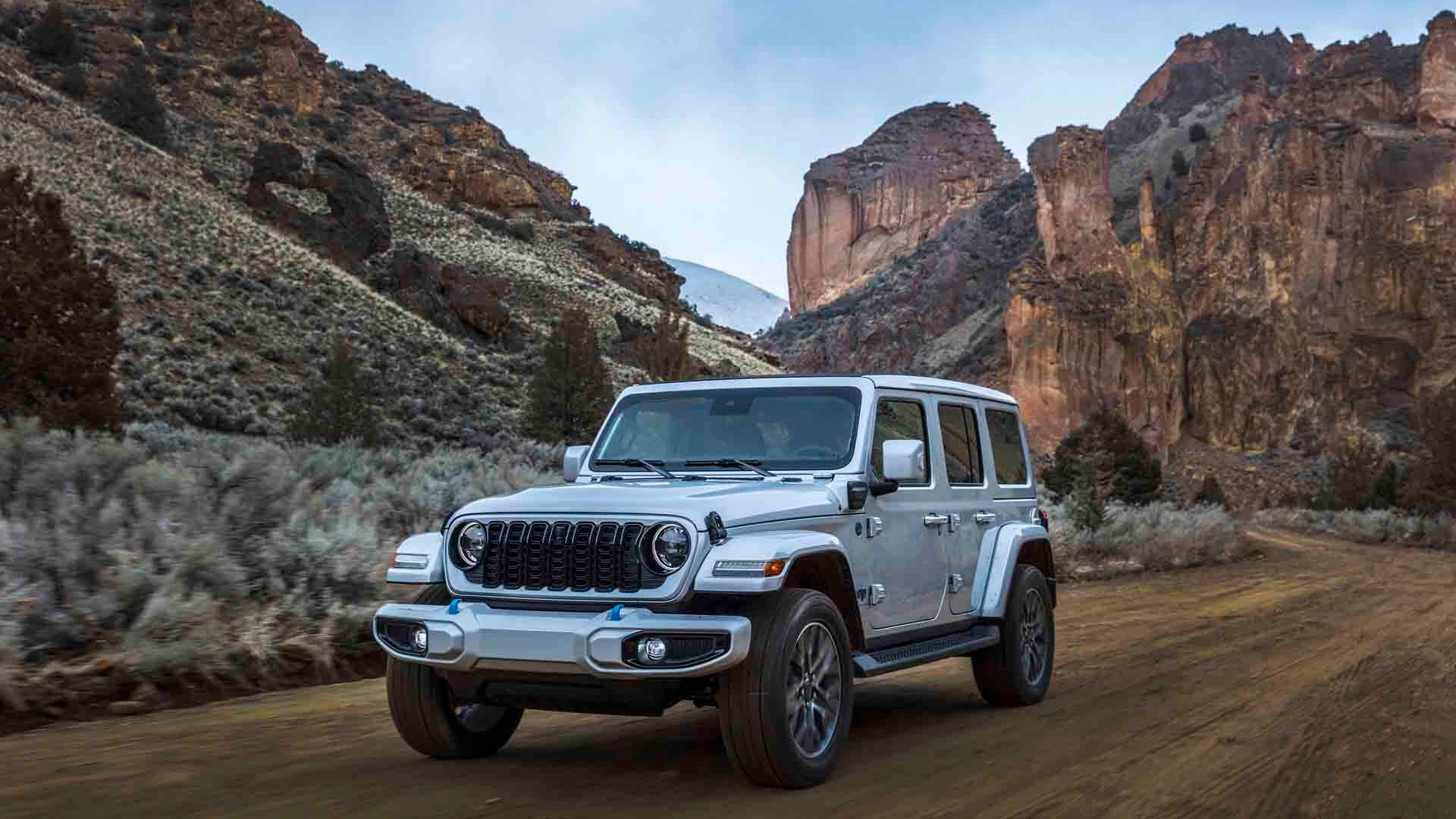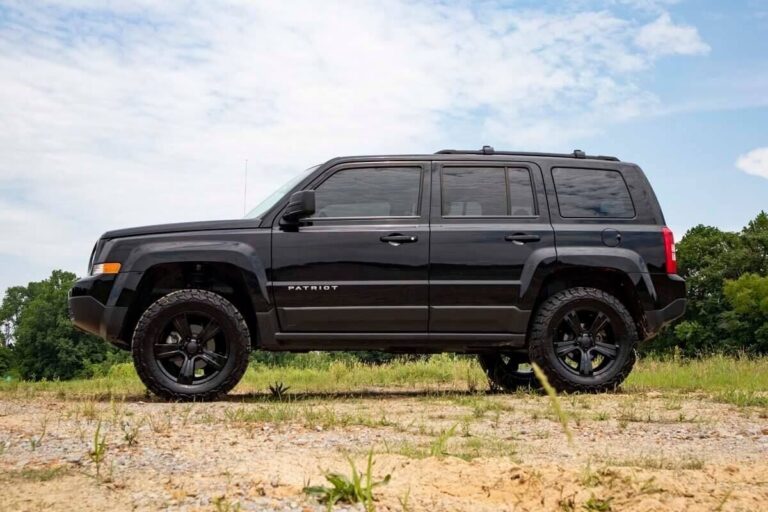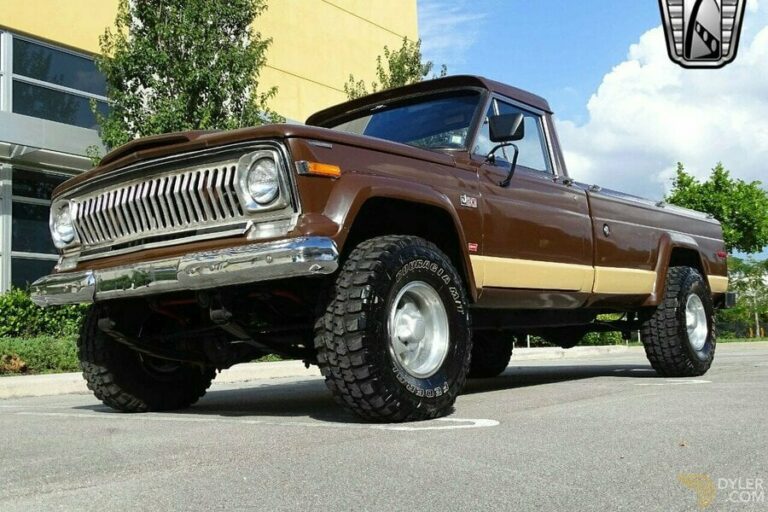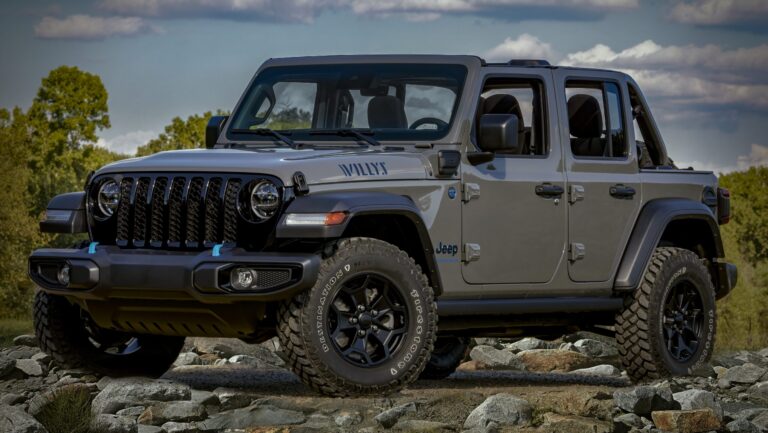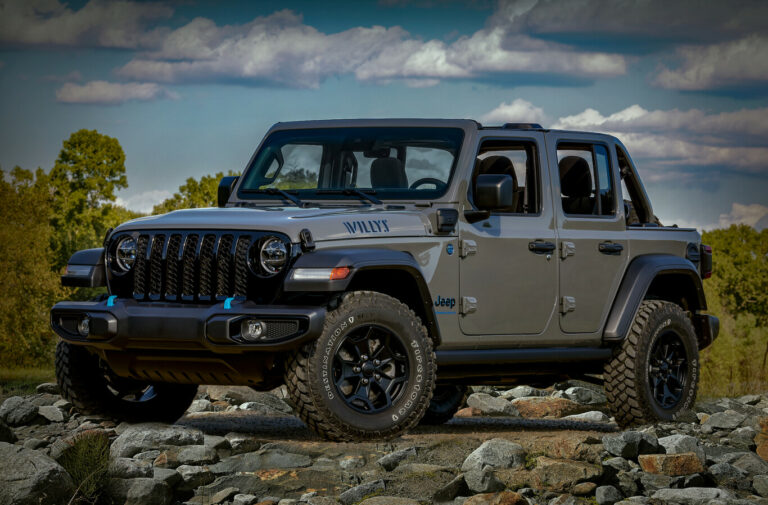Jeep Wrangler Years To Avoid: A Comprehensive Guide to Making an Informed Purchase
Jeep Wrangler Years To Avoid: A Comprehensive Guide to Making an Informed Purchase jeeps.truckstrend.com
The Jeep Wrangler stands as an icon, a symbol of freedom, adventure, and rugged capability. Its distinctive design and off-road prowess have captivated enthusiasts for decades, making it one of the most beloved and recognizable vehicles on the road – or off it. However, like any vehicle with a long production history and a dedicated following that often pushes its limits, not all Wrangler years are created equal. Some model years, due to specific manufacturing quirks, engine choices, or common design flaws, have earned a reputation for being less reliable or more prone to significant issues than others.
Understanding the "Jeep Wrangler Years To Avoid" is not about discouraging ownership, but rather about empowering potential buyers with the knowledge to make an informed decision. Investing in a used Wrangler can be a fantastic experience, but going in blind can lead to unexpected repair costs, frustrating breakdowns, and a diminished sense of the adventure you sought. This guide will delve into the specific model years and generations that have historically presented more challenges, detailing the common problems, offering practical advice, and helping you navigate the exciting, yet sometimes tricky, world of used Jeep Wranglers.
Jeep Wrangler Years To Avoid: A Comprehensive Guide to Making an Informed Purchase
Understanding the Wrangler Generations
Before diving into specific years, it’s helpful to understand the major generations of the Jeep Wrangler, as problems often span across a particular generation or during its transition phases.
- CJ (Civilian Jeep): Pre-1987 (often considered the spiritual predecessor rather than a direct Wrangler generation).
- YJ (Wrangler): 1987-1995 (recognizable by its square headlights).
- TJ (Wrangler): 1997-2006 (return to round headlights, coil spring suspension). The "LJ" (Unlimited) was a long-wheelbase version introduced in 2004.
- JK/JKU (Wrangler/Wrangler Unlimited): 2007-2018 (first four-door Wrangler, significantly larger).
- JL/JLU (Wrangler/Wrangler Unlimited): 2018-Present (modernized, refined, and more fuel-efficient options).
![]()
The Early 2000s: The TJ/LJ Era’s Lingering Issues (2005-2006)
While the TJ generation (1997-2006) is largely celebrated for its simplicity, robust 4.0L inline-six engine, and excellent off-road capability, the final years of its production, particularly 2005 and 2006, warrant extra scrutiny. These years saw the introduction of new components and design changes that sometimes led to unforeseen issues.
Key Issues to Watch For:
- Oil Pump Drive Assembly (OPDA) Failure (2005-2006 4.0L engine): This is perhaps the most critical concern for these specific years. The OPDA, which drives the oil pump and camshaft position sensor, was redesigned and prone to premature wear of its gears. If it fails, it can lead to a loss of oil pressure, causing significant engine damage, including camshaft and lifter wear. While a relatively inexpensive part to replace proactively, a failed OPDA can result in thousands of dollars in engine repairs.
- Automatic Transmission Issues (42RLE): The 42RLE automatic transmission, especially when paired with the 4.0L engine, was known for being somewhat underpowered and prone to overheating, particularly in off-road or towing scenarios. Sluggish shifts, slipping, and eventual failure are not uncommon, especially if not properly maintained.
- Rust: While not exclusive to these years, older TJs are highly susceptible to frame rust, especially in areas where salt is used on roads. The frame can rust from the inside out, making it difficult to detect until it’s severe. Check critical areas around the control arm mounts, skid plates, and suspension points.
- TIPM (Totally Integrated Power Module) Issues: Though more prevalent in the JK generation, some late-model TJs began to experience early signs of electrical gremlins related to the TIPM, leading to erratic electrical behavior.

Why Avoid (or be cautious): These issues, particularly the OPDA, can lead to costly repairs that might exceed the vehicle’s value if not caught early. While the 4.0L is legendary, these specific years introduced a weak link that can undermine its reliability.
The Early JK Generation: Power and Transmission Woes (2007-2011)
The launch of the JK generation in 2007 marked a significant departure, introducing a larger, more comfortable Wrangler, and for the first time, a four-door Unlimited model. However, the initial years, specifically 2007 through 2011, were plagued by the underwhelming and problematic 3.8L EGH V6 engine.
Key Issues to Watch For:
- 3.8L Engine Problems:
- Excessive Oil Consumption: Many owners reported needing to add oil frequently between changes, sometimes as much as a quart every 1,000 miles. While not always indicative of catastrophic failure, it’s a nuisance and can lead to premature wear if not monitored diligently.
- Inadequate Power: Compared to the vehicle’s weight and the demands of off-roading, the 3.8L often felt underpowered, particularly at highway speeds or climbing inclines.
- Head Gasket/Ticking Issues: Some engines developed ticking noises, often attributed to lifter or rocker arm issues, and in more severe cases, head gasket failures were reported.
- Automatic Transmission (42RLE) Limitations: The same 42RLE automatic transmission from the TJ carried over to the JK and continued to struggle with the heavier vehicle. Overheating, rough shifts, and early failure were common complaints, especially with larger tires or heavy use.
- TIPM (Totally Integrated Power Module) Failure: The TIPM, essentially the vehicle’s central electrical hub, was a major headache for many early JK owners. Symptoms ranged from intermittent power to specific components (wipers, fuel pump, lights) to complete vehicle shutdown. A replacement TIPM can be very expensive.
- Rust: Similar to the TJ, frame and body rust remain a concern, especially on earlier JKs from regions with harsh winters.
- Death Wobble: While not exclusive to early JKs, the "death wobble" (violent shaking of the front end, often at highway speeds) became a more prominent issue with the new solid front axle and suspension design. It’s usually caused by worn steering or suspension components, but it’s a common complaint for these years.
Why Avoid (or be cautious): The combination of the problematic 3.8L engine and the inadequate 42RLE transmission makes these years less desirable. The TIPM issues add another layer of potential frustration and expense.
The Mid-JK Generation: Pentastar’s Early Growing Pains (2012-2014)
In 2012, Jeep introduced the new 3.6L Pentastar V6 engine and a more robust 5-speed automatic transmission (W5A580) to the JK, significantly improving power and driving dynamics. However, the initial years of the Pentastar, particularly 2012 and early 2013, experienced some specific manufacturing defects.
Key Issues to Watch For:
- Cylinder Head Problems (2012-2013 3.6L Pentastar): The most notorious issue was premature failure of the left (driver’s side) cylinder head due to valve seat issues. This would manifest as a persistent ticking noise, misfires, and eventually a check engine light. While a warranty extension covered many of these, finding a vehicle from these years that hasn’t had the head replaced (or doesn’t have the issue) is crucial.
- Water Pump Failure: Some 3.6L engines from these years also saw a higher incidence of water pump failures, leading to coolant leaks and potential overheating.
- Continued TIPM Issues: While improved, the TIPM could still be a source of electrical headaches in these years, albeit less frequent than in the earlier JKs.
- Rust: As the JK platform aged, rust continued to be a persistent concern for many owners.
Why Avoid (or be cautious): The cylinder head issue can be a major repair. While many affected vehicles would have had the repair done under warranty, verifying this history is essential. If not, you could be facing a significant bill.
The Early JL Generation: Initial Modernization Hiccups (2018-2020)
The JL generation, launched in 2018, brought significant modernization, including new engine options, a more refined interior, and improved on-road manners. However, as with many newly redesigned vehicles, the initial production years, primarily 2018, 2019, and early 2020, had their share of "new model" kinks.
Key Issues to Watch For:
- Steering Issues (Steering Wander/Death Wobble): Despite a redesigned steering system, many early JL owners reported excessive steering wander, requiring constant corrections to stay straight, or the dreaded death wobble. While often attributable to worn components or poor alignment, some issues pointed to design flaws or manufacturing tolerances in the steering box itself. Jeep issued recalls and technical service bulletins (TSBs) to address these.
- Frame Welds/Quality Concerns: Some early production JLs had reports of inconsistent or incomplete frame welds, raising concerns about long-term durability and structural integrity.
- 2.0L Turbo Engine Issues: While generally reliable, the new 2.0L turbocharged "eTorque" engine saw some reports of oil consumption, turbocharger issues, and specific electrical gremlins related to the mild-hybrid system.
- 8-Speed Automatic Transmission Software Glitches: The new 8-speed automatic transmission was a vast improvement, but early versions sometimes exhibited rough shifting or delayed engagement, often resolved with software updates.
- Infotainment System Glitches: The Uconnect system, while feature-rich, occasionally suffered from freezing, connectivity issues, or unresponsive screens in early models.
Why Avoid (or be cautious): The steering issues can be a significant safety and comfort concern, and while some were addressed by recalls, others required persistent troubleshooting. Early production quality control can sometimes be less consistent.
General Considerations for Any Used Wrangler Purchase
Beyond specific model years, several factors apply to buying any used Jeep Wrangler:
- Rust is the Enemy: Always conduct a thorough inspection for rust, especially on the frame, suspension mounting points, floorboards, and body panels. It’s often the single biggest killer of older Wranglers.
- Maintenance History: A well-documented maintenance history is invaluable. Look for regular oil changes, transmission fluid changes, and evidence of proactive repairs.
- Modifications: Many Wranglers are heavily modified. While some mods are beneficial (e.g., quality lift kits, upgraded armor), poorly installed or excessive modifications can hide underlying issues, accelerate wear on other components, or even compromise safety. Inspect welds, wiring, and component compatibility carefully.
- Off-Road Use: Assume any Wrangler has been off-road. Look for signs of abuse: scraped skid plates, dented differentials, bent steering components, or excessive mud/dirt in hard-to-reach places.
- Pre-Purchase Inspection (PPI): This is non-negotiable. Have an independent mechanic (preferably one familiar with Jeeps) perform a comprehensive inspection before you buy. They can spot issues you might miss.
Practical Advice and Actionable Insights for Buyers
- Do Your Homework: Research specific recalls and TSBs for the year you’re considering. Online forums (like JL Wrangler Forums, JK Forum, Jeep Forum) are excellent resources for real-world experiences and common complaints.
- Budget for the Unexpected: Even with a "good" year, a used Wrangler will likely require more maintenance than a typical sedan. Factor in potential repair costs, especially for older models.
- Test Drive Thoroughly: Pay attention to engine noises, transmission shifts, steering feel, and braking. Drive at various speeds, including highway speeds, to check for the death wobble.
- Inspect for Rust with a Flashlight: Get underneath the vehicle. Tap the frame with a hammer (lightly!) to listen for hollow sounds that might indicate internal rust. Check body mounts, control arm mounts, and shock towers.
- Check for Fluid Leaks: Look under the vehicle after a test drive and inspect the engine bay for any signs of leaks.
- Verify Recalls and Service History: Ask for service records. You can also check the VIN on manufacturer websites or NHTSA.gov for open recalls.
- Consider the "Good Years": Generally, later JKs (2015-2018) with the refined Pentastar engine are considered more reliable. For TJs, the earlier years (1997-2004) often avoid the OPDA issue. For JLs, models from 2021 onwards have largely worked out the initial kinks.
Summary of Problematic Jeep Wrangler Years and Common Issues/Estimated Repair Costs
| Year Range | Generation | Common Issues | Estimated Repair Cost Range (Parts & Labor) |
|---|---|---|---|
| 2005-2006 | TJ/LJ | OPDA failure, 42RLE auto trans, Frame Rust | $500 – $3,000+ (OPDA), $1,500 – $4,000+ (Trans) |
| 2007-2011 | JK/JKU | 3.8L oil consumption/power, 42RLE auto trans, TIPM | $500 – $1,500 (oil), $1,500 – $4,000+ (Trans), $800 – $1,500 (TIPM) |
| 2012-2013 | JK/JKU | 3.6L Pentastar Left Cylinder Head, Water Pump | $1,500 – $3,000+ (Cylinder Head), $300 – $600 (Water Pump) |
| 2018-2020 | JL/JLU | Steering wander/death wobble, Frame welds, 2.0L Turbo issues | $500 – $2,000+ (Steering components), Varies widely (Frame/Engine) |
Note: These are estimated ranges and can vary significantly based on location, mechanic, and severity of the issue.
Frequently Asked Questions (FAQ)
Q1: Which Wrangler years are generally considered the most reliable?
A1: For the JK generation, 2015-2018 models with the refined 3.6L Pentastar engine are often cited as the most reliable. For the TJ generation, earlier models (1997-2004) avoid the OPDA issue of the later years. For the JL, models from 2021 onwards have generally addressed initial production quirks.
Q2: Is the "death wobble" common in all Wranglers?
A2: While not exclusive to any single year, the "death wobble" is a known phenomenon across most Wrangler generations, particularly the JK and JL. It’s almost always caused by worn or loose steering/suspension components (e.g., ball joints, track bar, tie rod ends, control arm bushings). It’s a fixable issue, but needs immediate attention.
Q3: What is a TIPM and why is it problematic?
A3: TIPM stands for Totally Integrated Power Module. It’s essentially the main fuse box and computer that controls electrical functions in the vehicle. In certain JK years, the TIPM was prone to internal failures, leading to erratic electrical behavior (e.g., wipers turning on by themselves, fuel pump not engaging, lights flickering, or even the vehicle not starting). It’s an expensive part to replace.
Q4: Can I fix these issues myself to save money?
A4: Some issues, like replacing a water pump or diagnosing basic electrical problems, might be within the scope of an experienced DIY mechanic. However, major engine work (like cylinder head replacement) or complex transmission repairs generally require specialized tools and expertise. Always assess your skill level and available resources before attempting major repairs.
Q5: Are older Wranglers always worse than newer ones?
A5: Not necessarily. While older Wranglers might have more accumulated wear and tear, and some specific design flaws in certain years, a well-maintained older Wrangler (e.g., a 1997-2004 TJ) can be incredibly reliable due to its simpler design. Conversely, newer models can have their own "new technology" issues. The key is condition, maintenance history, and a thorough inspection.
Conclusion
The Jeep Wrangler remains an incredibly desirable vehicle, offering an unparalleled blend of open-air freedom, customization potential, and legendary off-road capability. Knowing the "Jeep Wrangler Years To Avoid" isn’t about shying away from this iconic SUV, but rather about approaching a used purchase with eyes wide open. By understanding the common pitfalls of specific model years, conducting diligent research, and investing in a thorough pre-purchase inspection, you can significantly reduce your risk of unexpected expenses and ensure your Wrangler ownership experience is filled with adventure, not aggravation. Choose wisely, and you’ll be well on your way to enjoying the unique spirit that only a Jeep Wrangler can provide.
